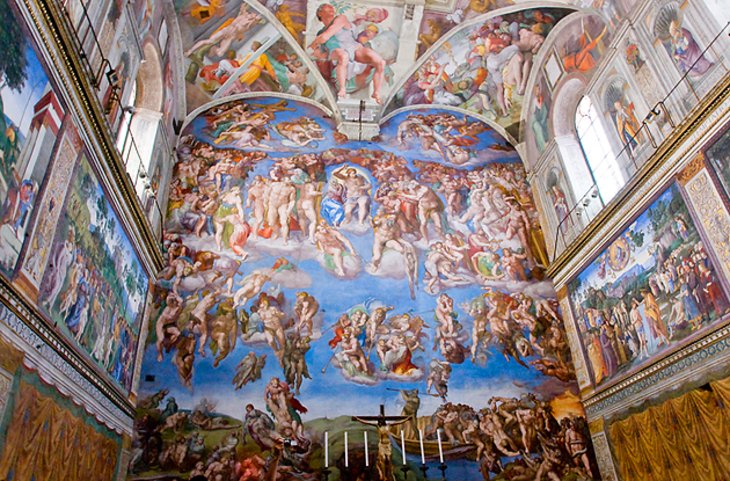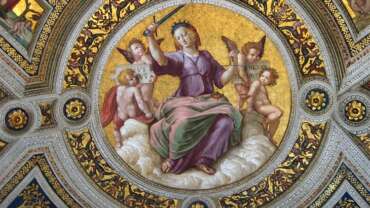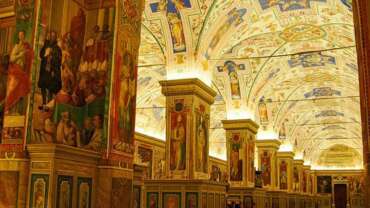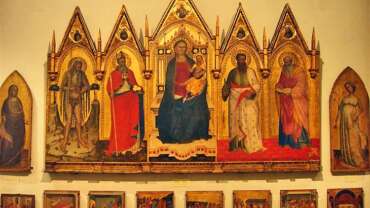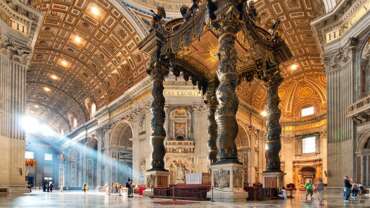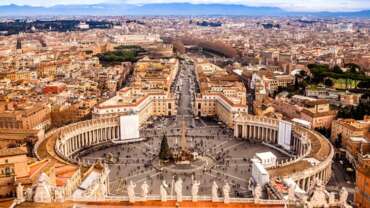Sistine Chapel
Built by Pope Sixtus IV in 1473-84, the Sistine Chapel is a rectangular hall, which is the Pope’s domestic chapel, also used for services and special occasions. After the death of a Pope, the conclave to elect his successor is held here. The frescoes by Michelangelo and others covering the walls and ceiling, acknowledged as the pinnacle of Renaissance painting, were extensively restored from 1980 to 1994, removing layers of candle-soot, dust, varnish, grease, and overpainting to reveal their original luminous colors. The side walls are covered with large frescoes of Biblical scenes against the background of Umbrian and Tuscan scenery, painted for Sixtus IV by the most celebrated painters of the day – Perugino, Botticelli, Rosselli, Pinturicchio, Signorelli, and Ghirlandaio. These late-15th-century paintings already reflect the ideas of humanism, recognizing humans as individuals and important in the historical process. The left-hand wall shows Old Testament scenes; the right wall New Testament scenes.
The frescoes on the ceiling were painted by Michelangelo, almost completely unaided by assistants, in the reign of Pope Julius II, between 1508 and 1512. Michelangelo’s ambitious idea was to depict the Creation as described in Genesis, beginning with God separating light from darkness, creating the sun and the moon, separating land and sea, and creating Adam and then Eve, and continuing through the story of Noah. Below in the vaulting are colossal figures of the prophets and sibyls. Michelangelo began work on the large fresco on the altar wall in 1534, depicting the final scene in the story of the world, the Last Judgment. Its dramatic presentation and artistic finesse rank it as one of the greatest achievements of European painting.



